
Greetings, dear @drinklovers, happy week to all. Today I continue with the ferment saga. As I told you in my previous post about [Jamaican flower sodas](https://peakd.com/hive-189869/@sirenahippie/eng-esp-jamaican-flower-sodas--bonus ), I am very happy with this foray into the world of fermented drinks; Maybe later I will try to make ferments with solid foods, but for now, just drinks. And on this occasion I have brought you an amazing fermented drink, made from guava.
>Saludos, queridos @drinklovers, feliz semana para todos. Hoy continúo con la saga de fermentos. Como les comenté en mi post anterior de [gaseosas de flor de Jamaica](https://peakd.com/hive-189869/@sirenahippie/eng-esp-jamaican-flower-sodas--bonus), estoy muy contenta con esta incursion en el mundo de las bebidas fermentadas; quizás más adelante intentaré hacer fermentos con alimentos sólidos, pero por ahora, sólo bebidas. Y en esta ocasión les he traído una amazing drinks fermentada, hecha a base de guayaba.


As I indicated in my previous post, every fermented drink recipe requires four elements which are: Boiled water (without chlorine), fermentation agent, source of sweetness and finally flavor. As always for this recipe I have used water which I have boiled enough, and I have let it rest until it reaches room temperature. The leavening agent I will use is HONEY, a wild honey, that is freshly harvested. The source of sweetness, in addition to honey, is white sugar and the fruit itself. And the flavor will be given by the guava, the fruit. In this recipe I have made two versions: One with raw fruit and another with cooked fruit. With that said, let's get to the recipe!
> Como indiqué en mi post anterior, toda receta de bebida fermentada requiere cuatro elementos los cuales son: Agua hervida (sin cloro), agente de fermentación, fuente de dulzor y por último sabor. Como siempre para esta receta he usado agua la cual he hervido lo suficiente, y la he puesto en reposo hasta que alcanzara la temperatura ambiente. El agente de fermentación que usaré es MIEL, una miel silvestre, que está recién cosechada. La fuente de dulzor, además de la miel, es azúcar blanca y la misma fruta. Y el sabor lo dará la guayaba, la fruta. En esta receta he hecho dos versiones: Una con la fruta cruda y otra con la fruta cocida. Dicho esto, ¡vamos a la receta!
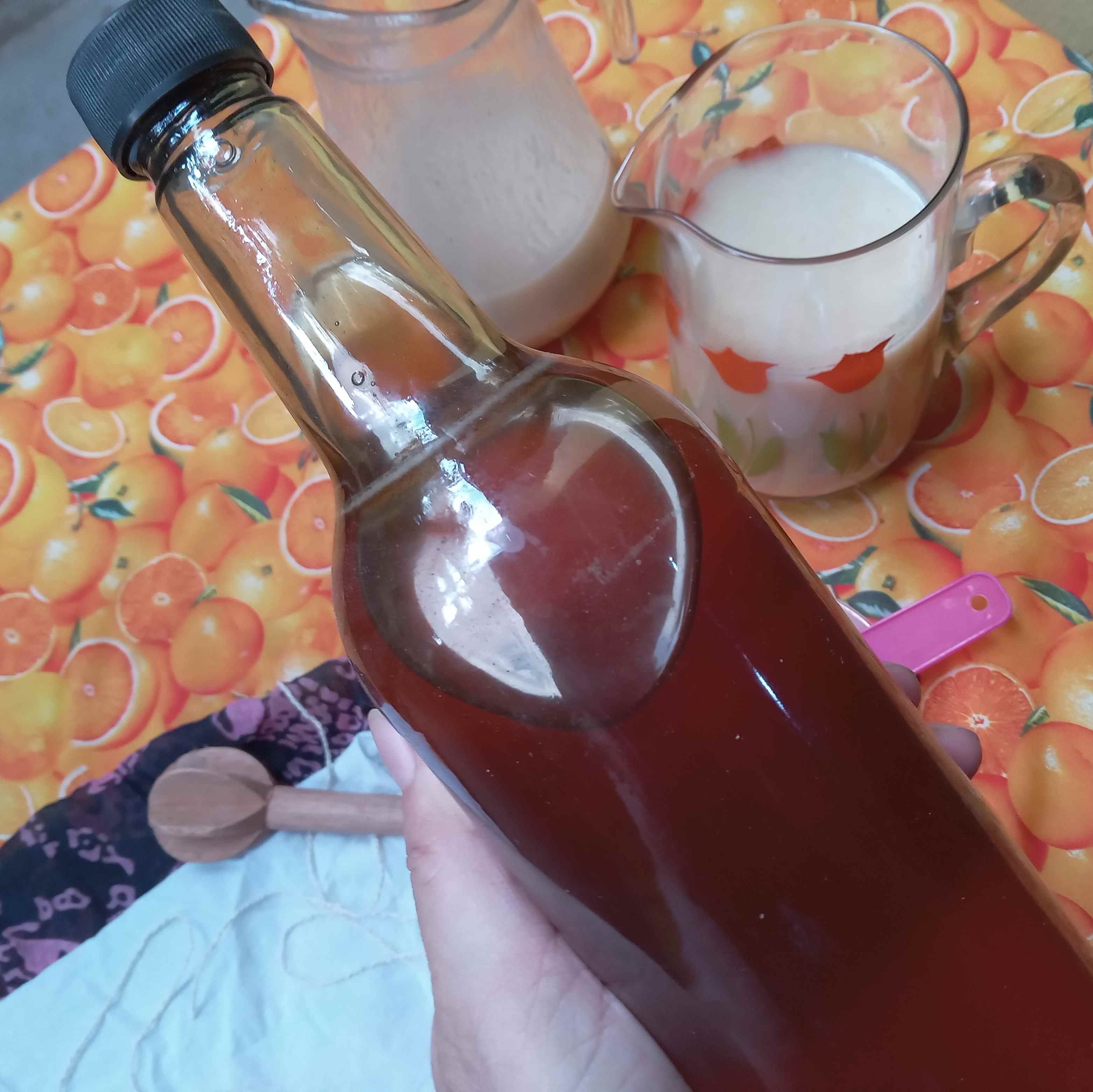
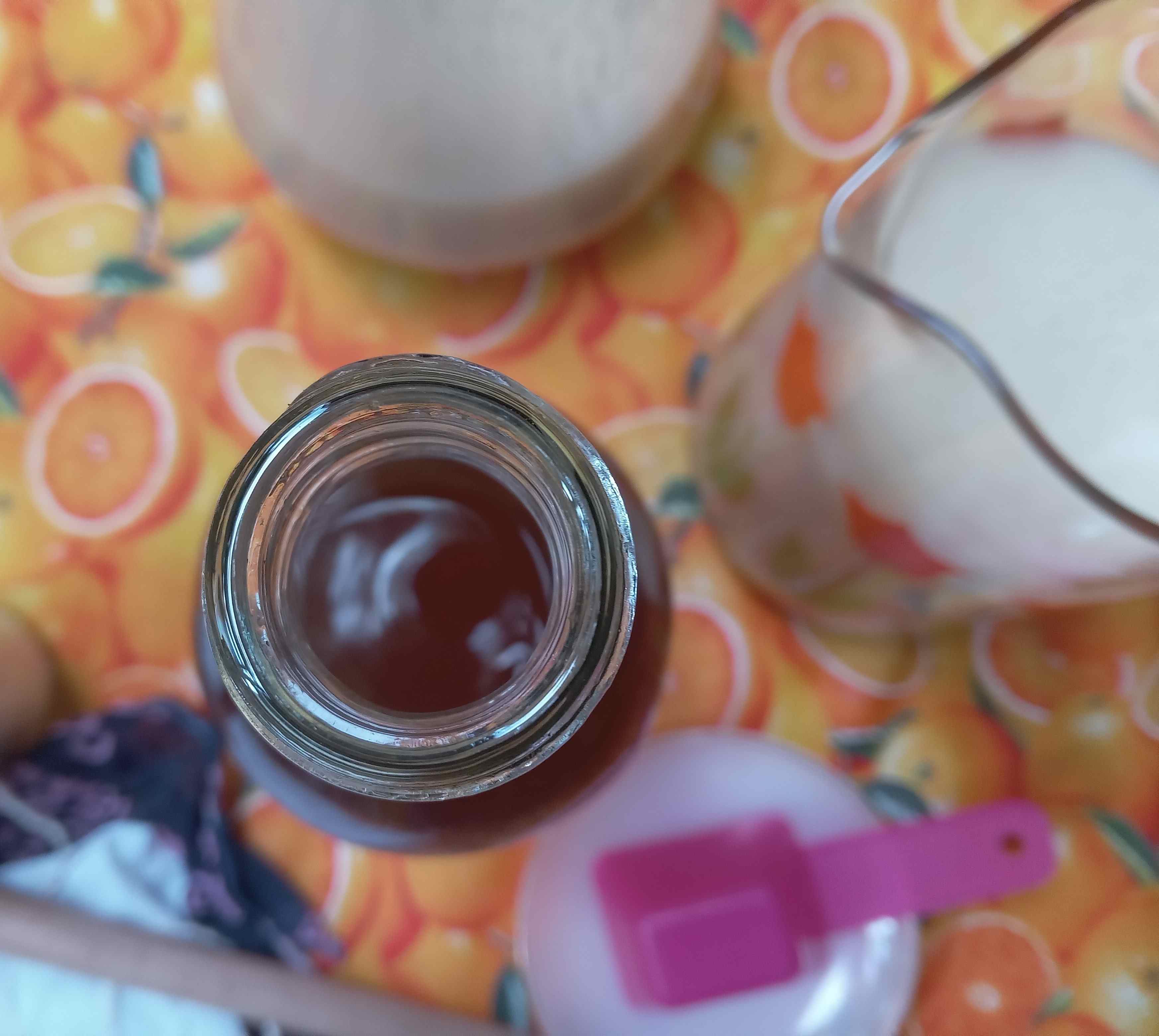

THE RECIPE / LA RECETA
Time, ingredients and equipment
+ Preparation time: Like any fermentation recipe, time is required, which can vary based on environmental factors and the ingredients used. In my case, it took me 3 days to make this recipe.
+ Quantities may vary according to each person's taste and availability.
+ Servings: Approximately 1.5 liters of GUAVA FERMENT.
+ 0.7 liters of guava juice (raw). For this I used 250 grams of guava + 600 ml of boiled water, without chlorine.
+ 0.7 liters of guava juice (cooked). For this I used 250 grams of guava + 600 ml of boiled water, without chlorine.
+ Sweetener of your choice. For this recipe I used 200 grams of white sugar.
+ 100 ml of unprocessed, wild bee honey.
+ Ice to taste to serve (optional).
+ Pot, strainer, blender, wood remover, plate, knife, glass jars, clean cloths, piece of twine, measuring cups, etc.
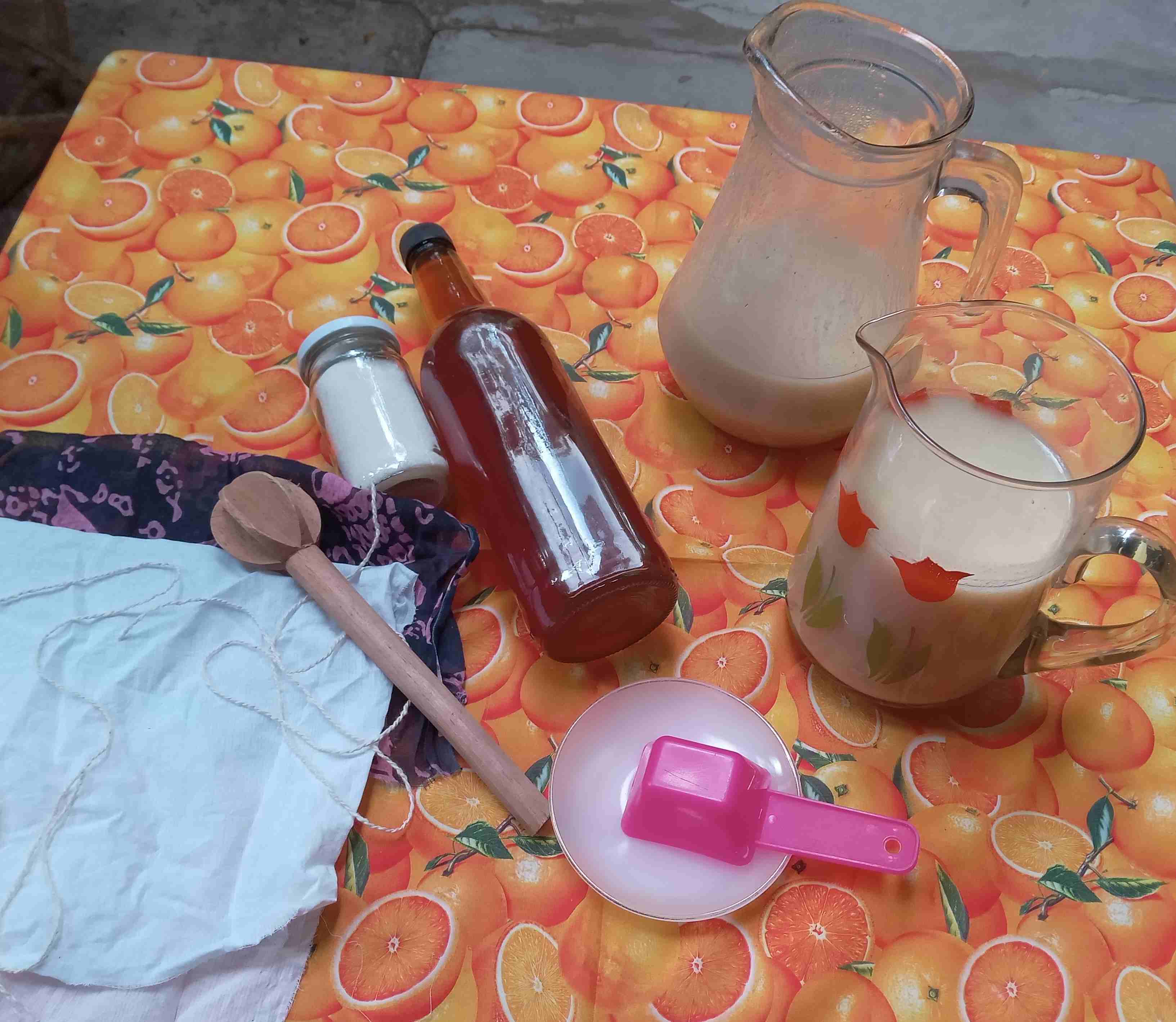
Tiempo, ingredientes y equipo
+ Tiempo de preparación: Como toda receta de fermentación, se requiere tiempo, el cual puede variar en base a factores ambientales y de los ingredientes que se utilicen. En mi caso, requerí 3 días para hacer esta receta.
+ Las cantidades pueden variar de acuerdo al gusto y a la disponibilidad de cada quien.
+ Raciones: Aproximadamente 1.5 litros de FERMENTO DE GUAYABA.
+ 0.7 litros de jugo de guayaba (cruda). Para ello utilicé 250 gramos de guayaba + 600 ml de agua hervida, sin cloro.
+ 0.7 litros de jugo de guayaba (cocida). Para ello utilicé 250 gramos de guayaba + 600 ml de agua hervida, sin cloro.
+ Endulzante de tu elección. Para esta receta usé 200 gramos de azúcar blanca.
+ 100 ml de miel de abeja que no haya sido procesada, silvestre.
+ Hielo al gusto para servir (opcional).
+ Olla, colador, licuadora, removedor de madera, plato, cuchillo, jarras de vidrio, telas limpias, trozo de cordel, tazas medidoras, etc.

THE PROCEDURE / EL PROCESO
On this occasion I did not show the process of making guava juice, as it seemed unnecessary to me, due to how simple it is. Both jugs contain guava juice, one made with raw guavas, previously washed and disinfected with baking soda. The other juice was made with washed and boiled (cooked) guavas. Both juices were strained to remove the seeds and other remains of the peel. It is advisable to use glass jars or jugs, because ferments generally interact with surfaces, and glass does not release molecules.
> En esta ocasión no mostré el proceso de hacer los jugos de guayaba, pues me pareció innecesario, por lo simple que es. Ambas jarras contienen jugo de guayaba, uno hecho con guayabas crudas, previamente lavadas y desinfectadas con bicarbonato de sodio. El otro jugo fue hecho con guayabas lavadas y hervidas (cocidas). Ambos jugos fueron colados para retirar las semillas y otros restos de la cáscara. Es recomendable usar frascos o jarras de vidrio, porque los fermentos por lo general interactúan con las superficies, y el vidrio no desprende moléculas.
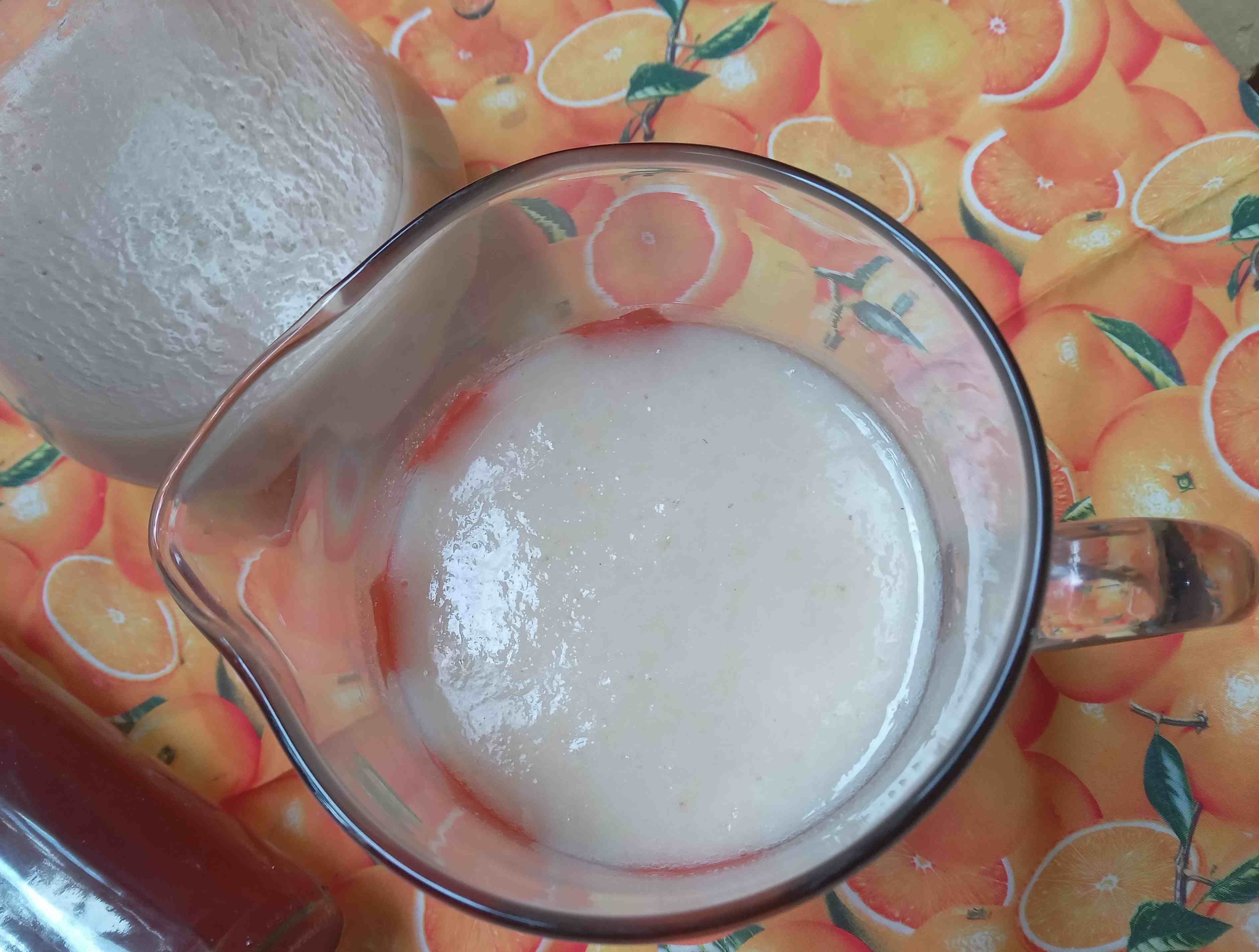
Raw juice / Jugo crudo

Cooked juice / Jugo cocido

To each jar add 50 ml of honey (wild), and 100 grams of white sugar. Mix well with a wooden or plastic spoon, trowel or stirrer. Do not use metal instruments.
>A cada jarra añadir 50 ml de miel de abeja (silvestre), y 100 gramos de azúcar blanca. Mezclar bien con una cuchara, paleta o removedor de madera o plástico. No usar instrumentos de metal.

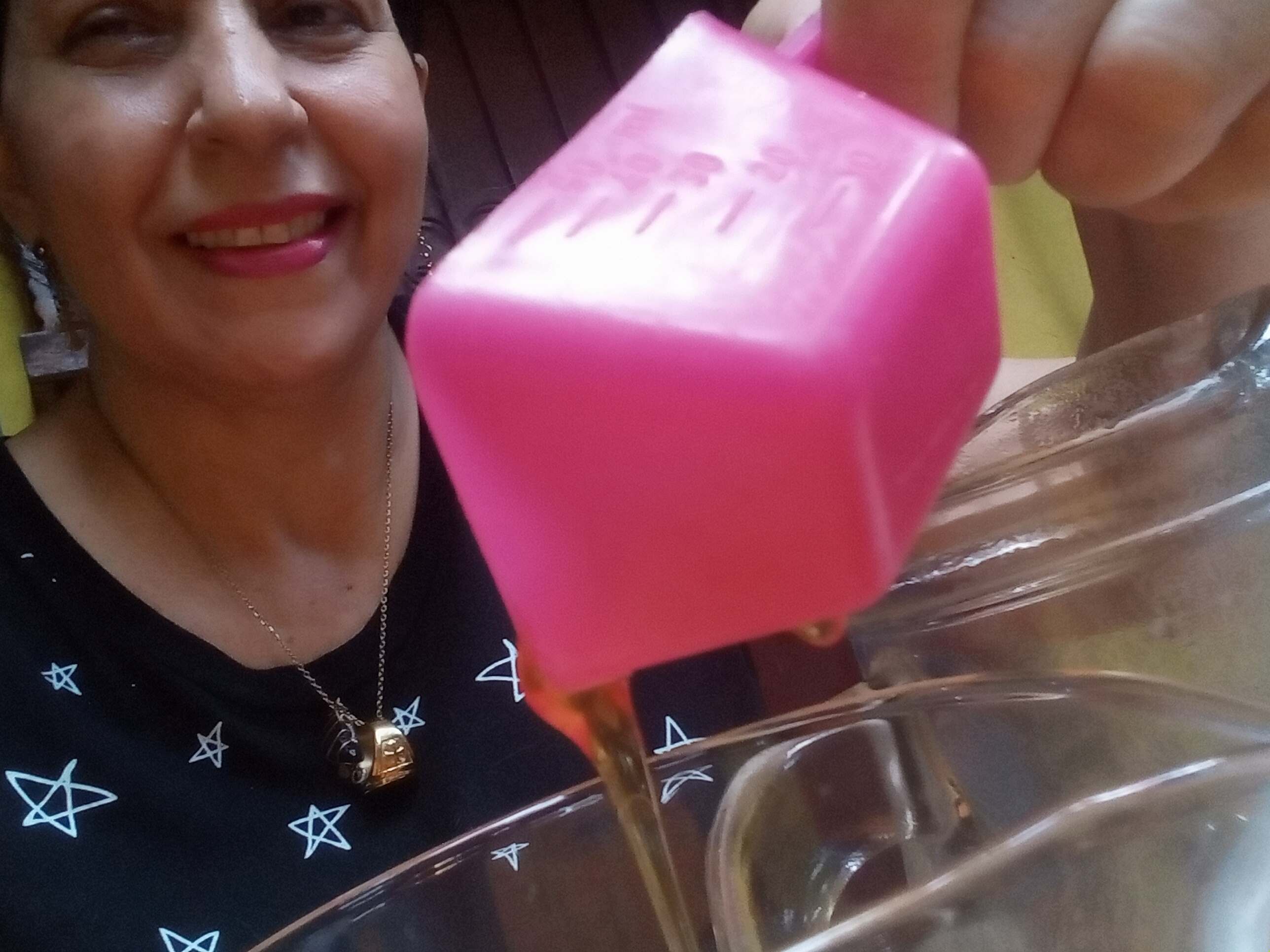

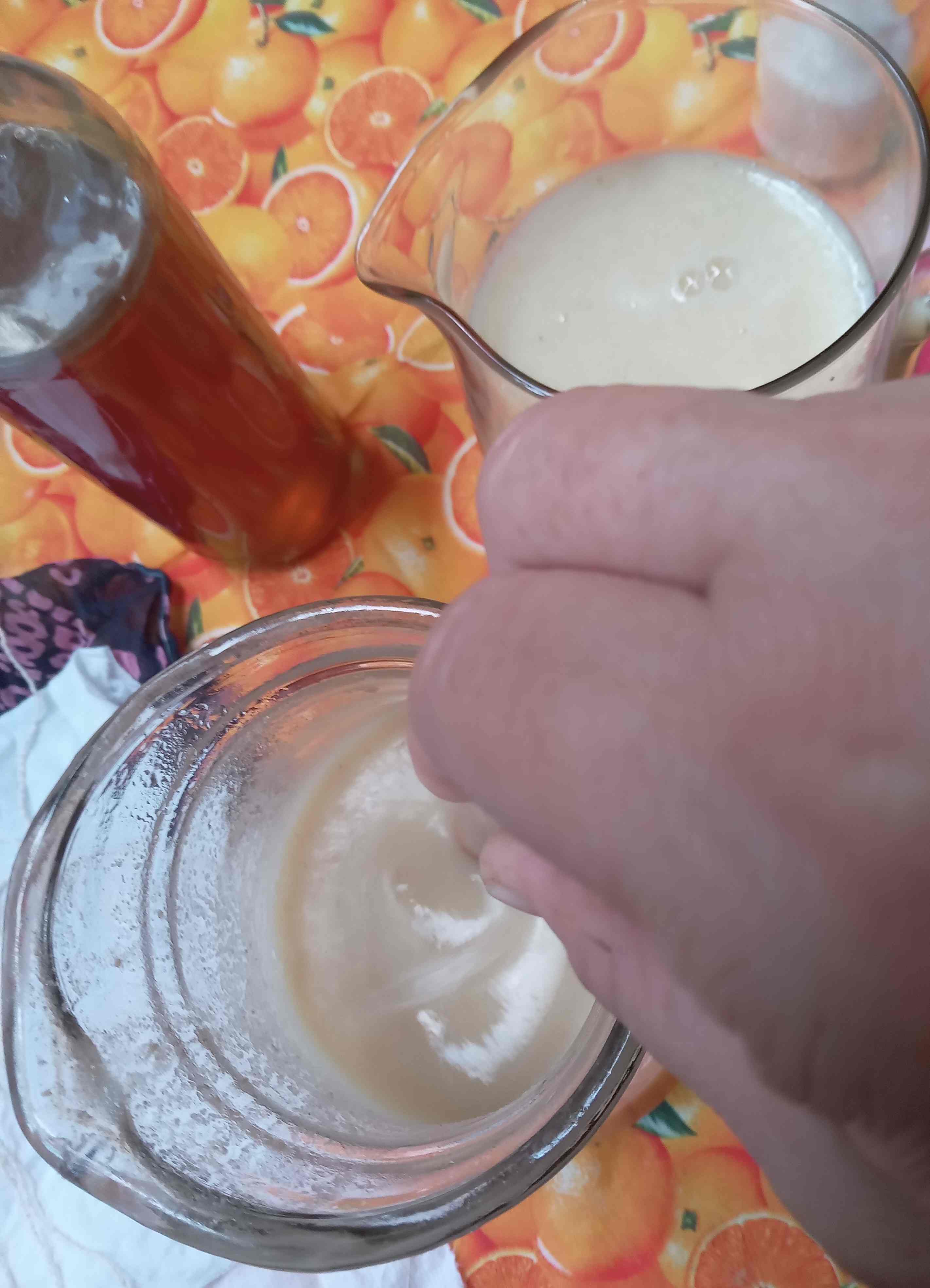
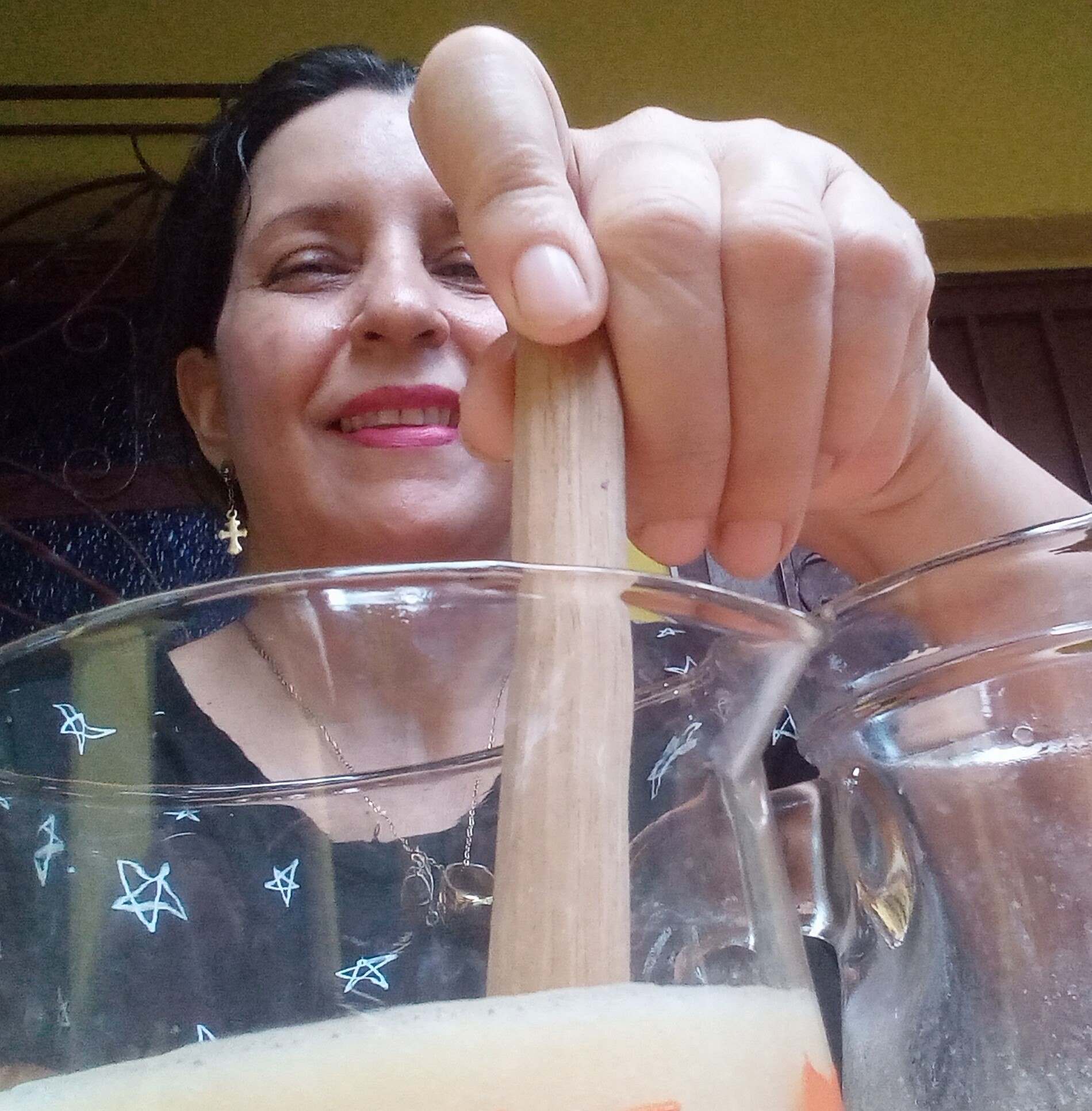
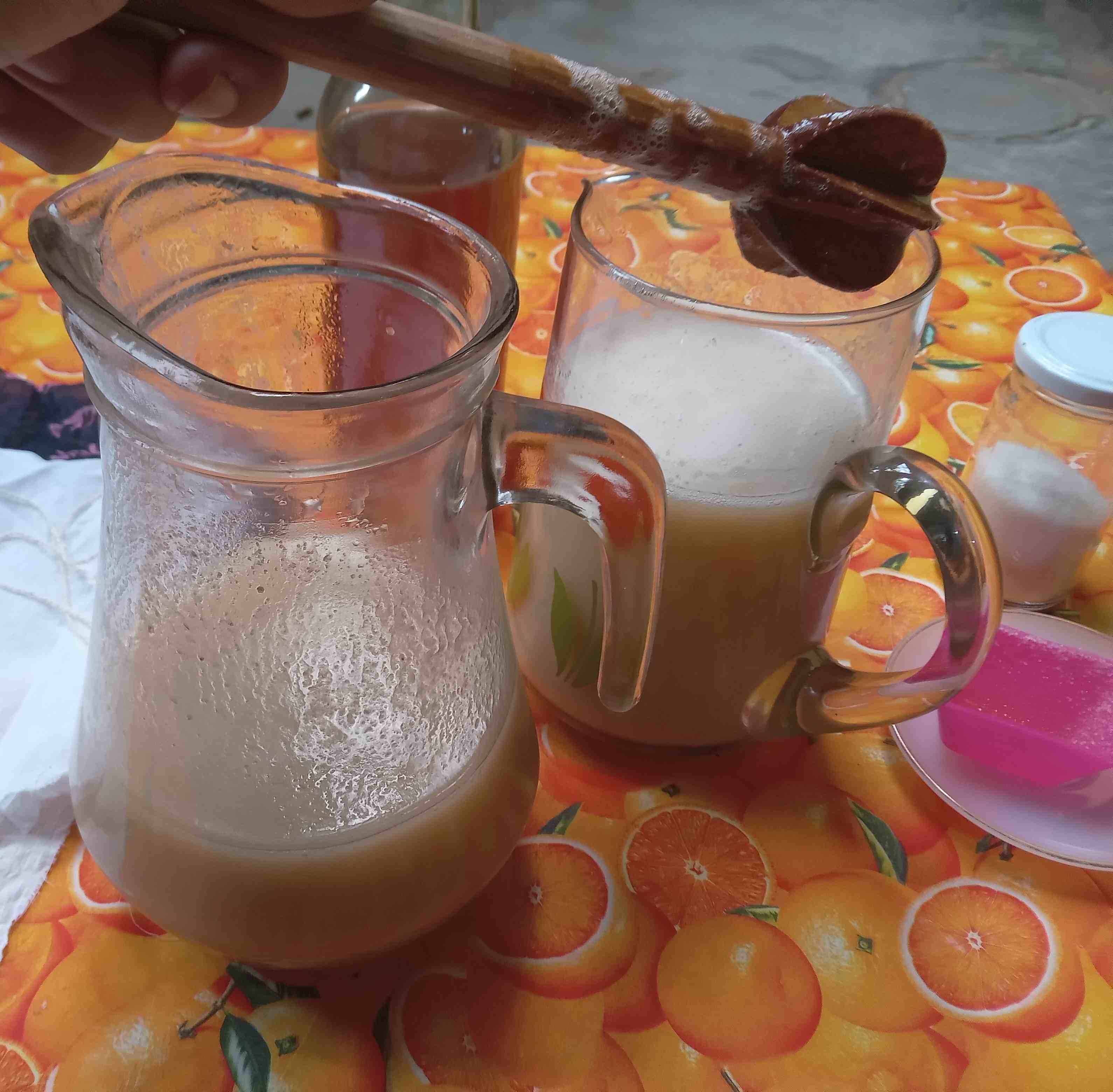

Cover each jar with a clean piece of cloth and tie it with string. Take to a warm and dark place. I kept both jars in my kitchen cabinet for a period of 2 days. From this moment on, every 8 hours (approximately), stir the contents of each jar very well. This will allow the liquids to oxygenate, providing oxygen to the yeasts present in the juice, with which they can do their job of consuming the sugar and producing carbon dioxide, ethanol and other compounds.
>Tapar cada jarra con un trozo de tela limpio y atarlo con un cordel. Llevar a un sitio cálido y oscuro. Yo guardé ambas jarras en el gabinete de mi cocina por un lapso de 2 días. A partir de este momento, cada 8 horas (aproximadamente), remover muy bien el contenido de cada jarra, esto permitirá que los líquidos se oxigenen, proveyéndole oxígeno a las levaduras presentes en el jugo, con lo cual pueden hacer su trabajo de consumir el azúcar y producir gas carbónico, etanol y otros compuestos.

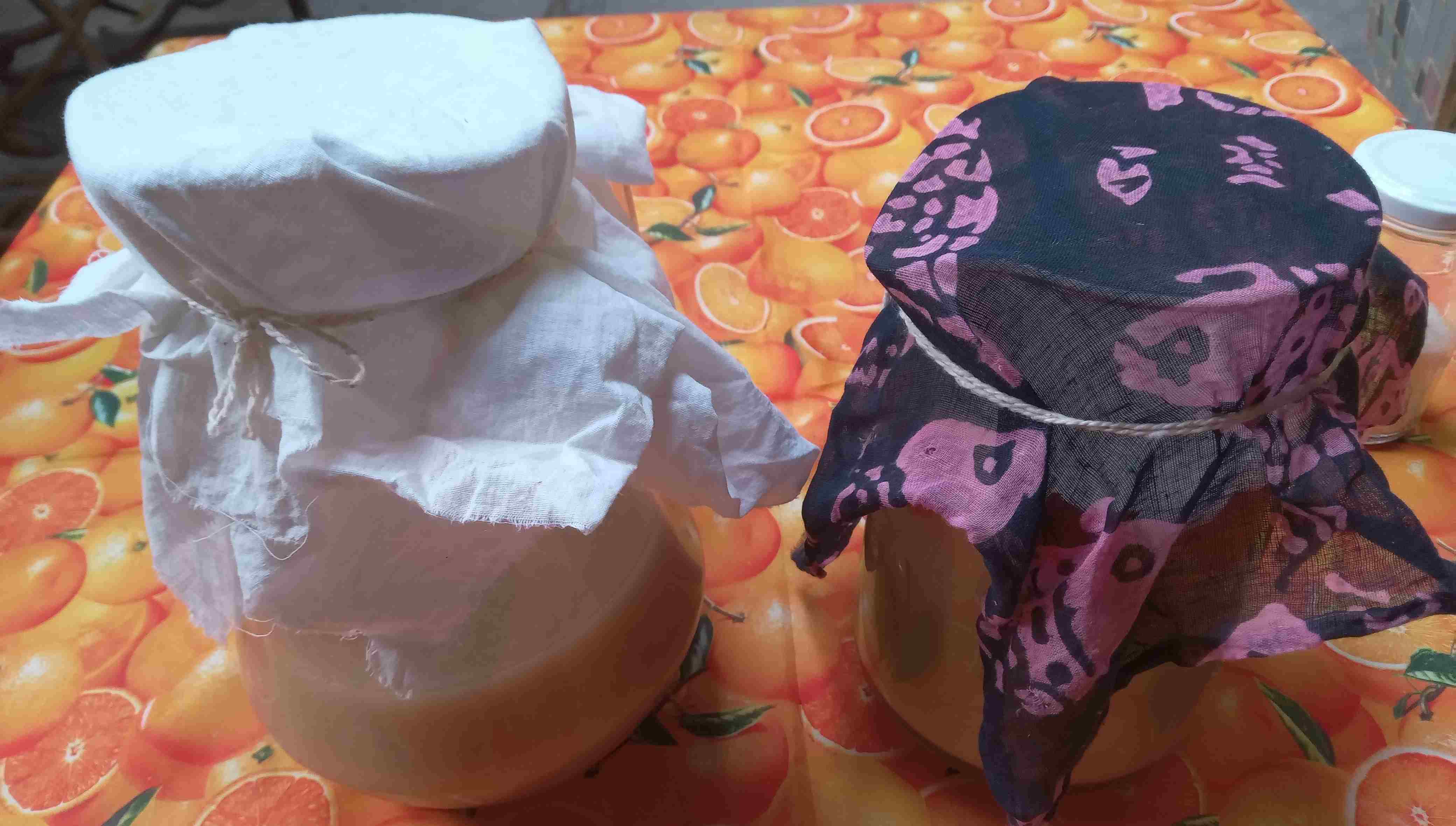

SECOND DAY OF FERMENTATION / SEGUNDO DÍA DE FERMENTACIÓN

I did not take photographs of the first day of fermentation of these juices, however, the jar with the raw juice had a lot of fermentation activity, which was evident by the bubbles and foam on the surface. The juice cooked during the first day did not show significant changes; However, on this second day, he did show an obvious change. The intense activity of the yeasts in both jars is very notable, due to the odors they give off, the bubbles and, the most obvious sign, is that the solid portion of the juice, which is the fruit, has separated from the liquid and floats on the surface, and it looks like a cheese! Hahaha, you can see the little holes inside that layer of fruit, those little holes are produced by the carbon dioxide expelled by the yeasts.
>No tomé fotografías del primer día de fermentación de estos jugos, sin embargo, la jarra con el jugo crudo presentaba mucha actividad de fermentación, que era evidente por las burbujas y espuma en la superficie. El jugo cocido durante el primer día, no mostró cambios significativos; sin embargo, en este segundo día, sí mostró un cambio evidente. Es muy notable la intensa actividad de las levaduras en ambas jarras, por los olores que desprenden, las burbujas y, el signo más evidente, es que la porción sólida del jugo, que es la fruta, se ha separado del líquido y flota en la superficie, y parece ¡un queso!, jajajaja, se pueden ver los huequitos dentro de esa capa de frutas, esos huequitos son producidos por el gas carbónico expelido por las levaduras.

Cooked juice / Jugo cocido

Raw juice / Jugo crudo

Cooked juice / Jugo cocido
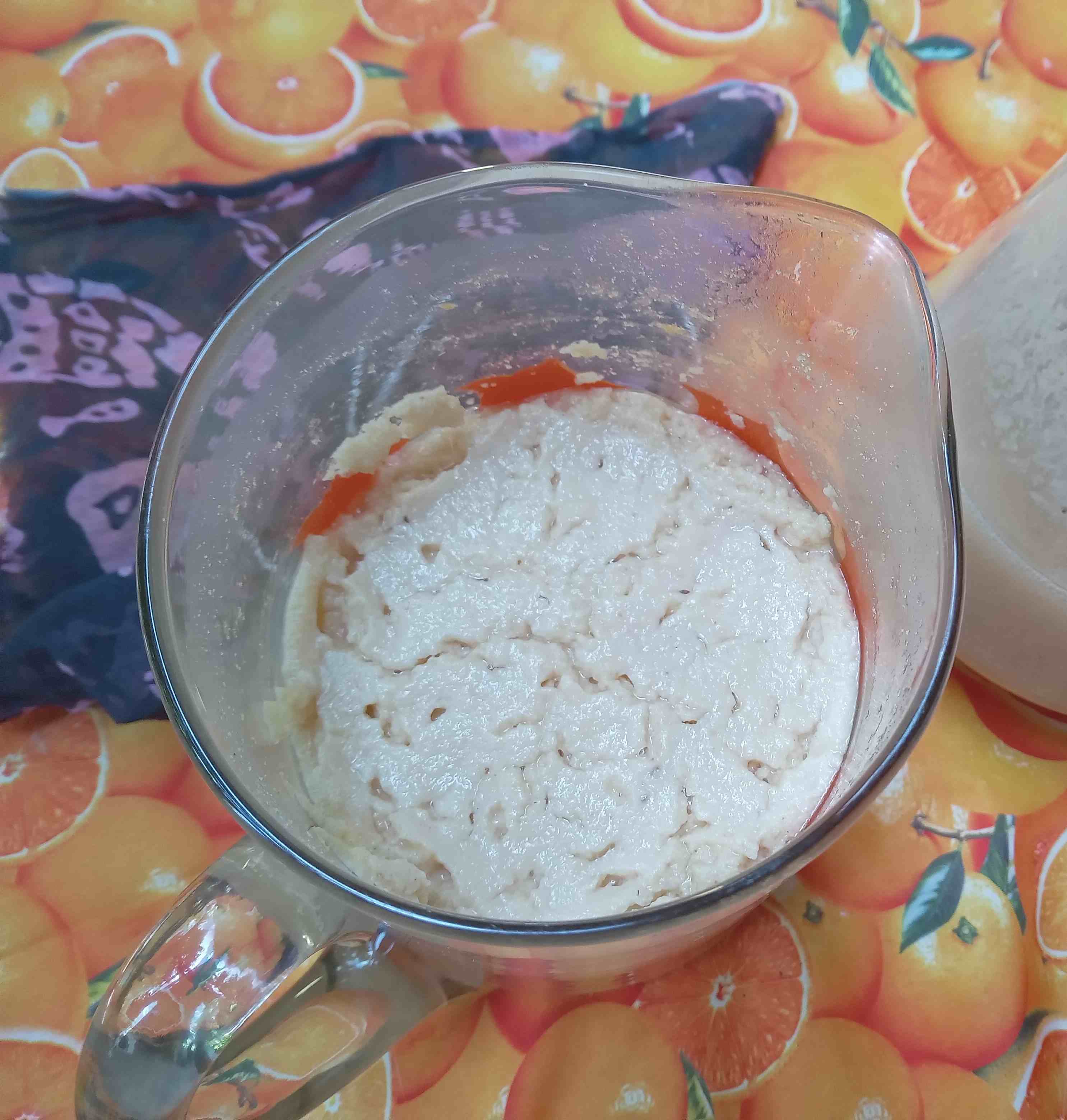
Raw juice / Jugo crudo

When stirring the contents of both jars, many bubbles emerge, reflecting the peak of fermentation activity. The smell of both drinks is very intense and is pleasant, sweet. When tasting the raw juice, it is sour and tasty, with a somewhat pronounced alcohol flavor. The cooked juice is less acidic, sweeter and more pleasant, and the liquor flavor is less. Both ferments are delicious. I serve them in glasses with ice cubes and enjoy them. To be honest, it's a flavor that I'm not used to, but I quite like it, plus, you can feel the little bubbles in your mouth, which is a pleasant sensation.
>Al remover el contenido de ambas jarras, salen muchas burbujas, lo que refleja el pico de la actividad de fermentación. El olor de ambas bebidas es muy intenso y es agradable, dulce. Al probar el jugo crudo, es ácido y sabroso, con un sabor a alcohol algo pronunciado. El jugo cocido es menos ácido, más dulce y agradable, y el sabor a licor es menor. Ambos fermentos están deliciosos. Los sirvo en vasos con cubos de hielo y los degusto. Siendo franca, es un sabor al cual no estoy acostumbrada, pero me gusta bastante, además, las burbujitas se sienten en la boca, lo cual es una grata sensación.
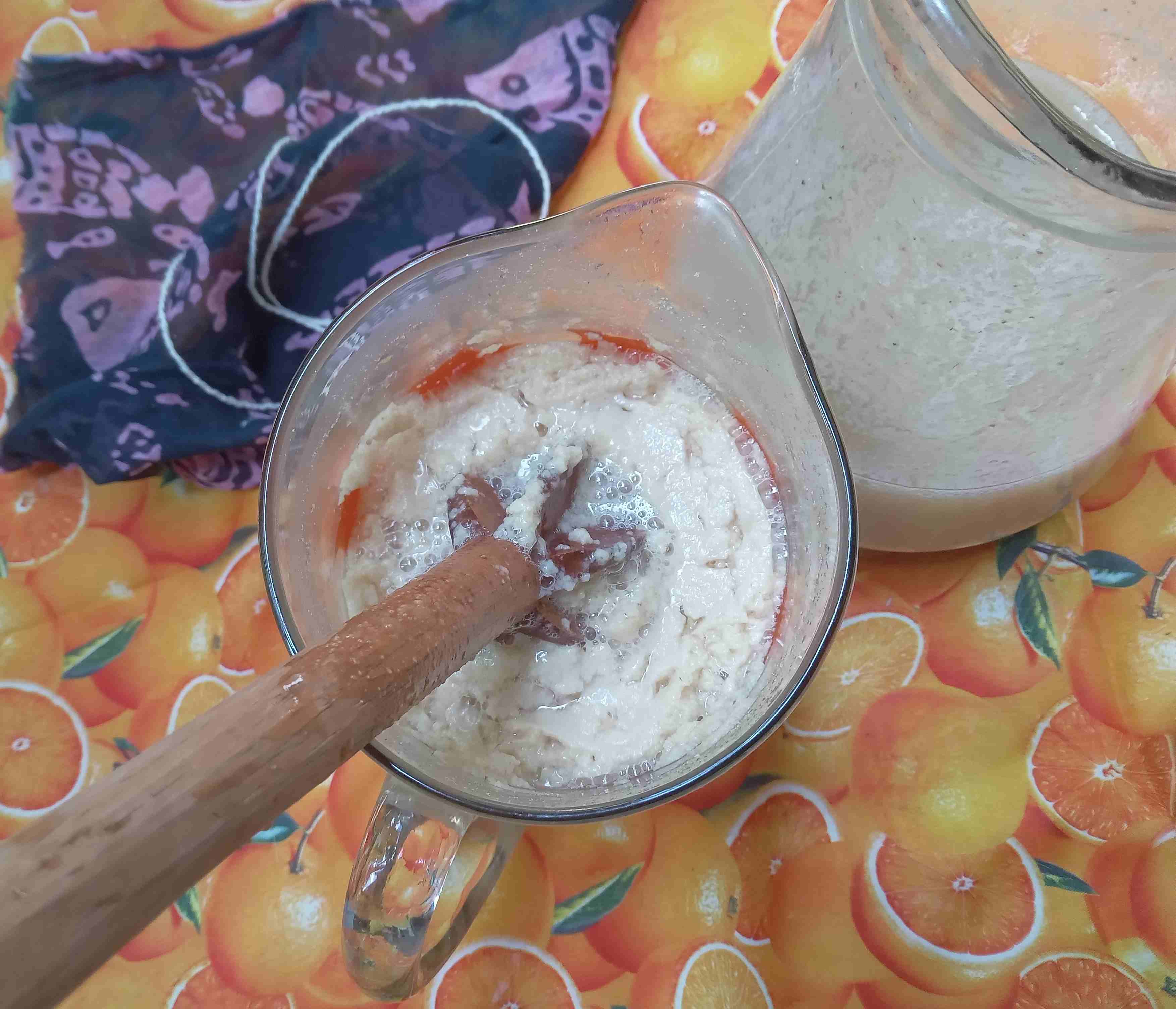
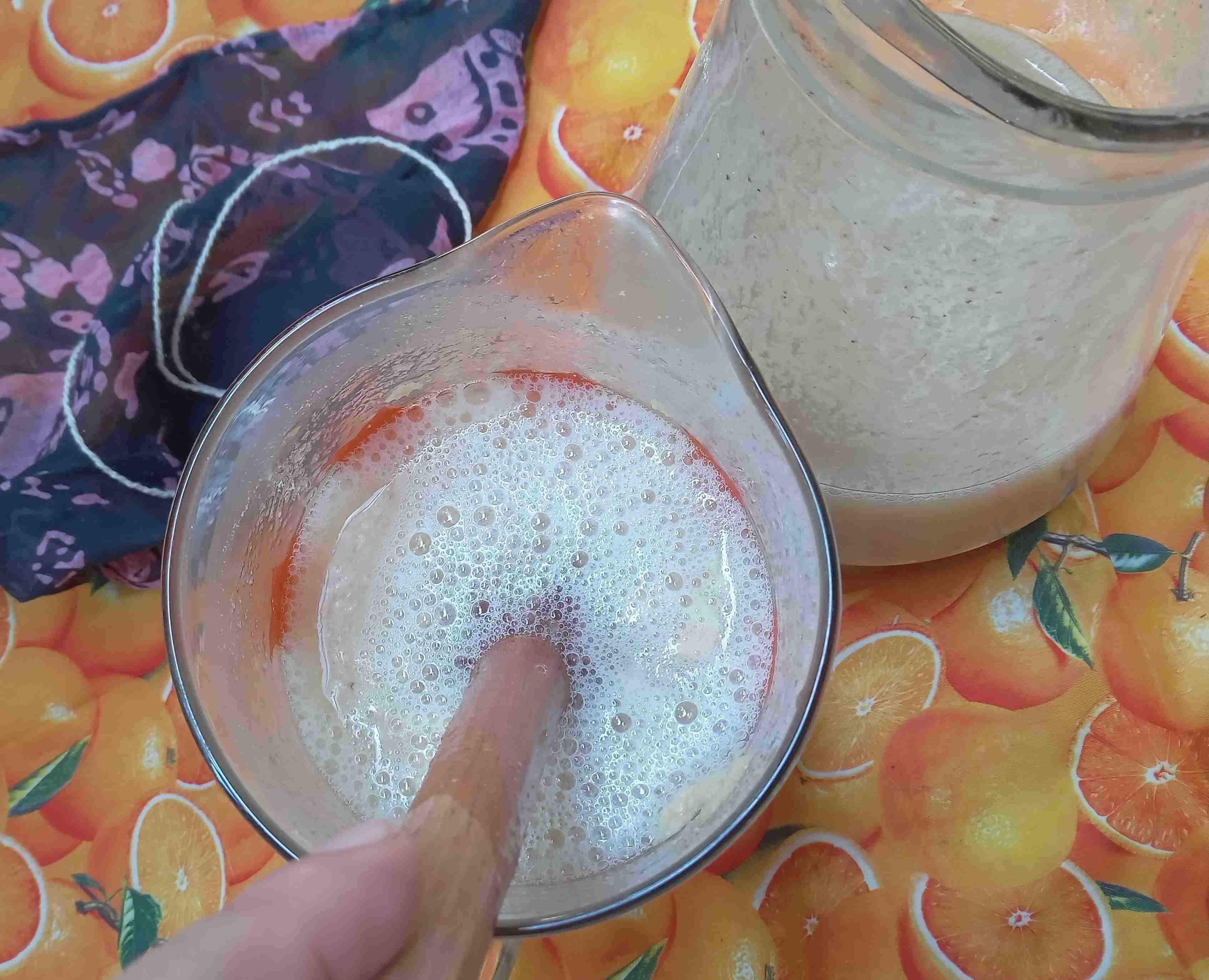
Raw juice / Jugo crudo


Cooked juice / Jugo cocido

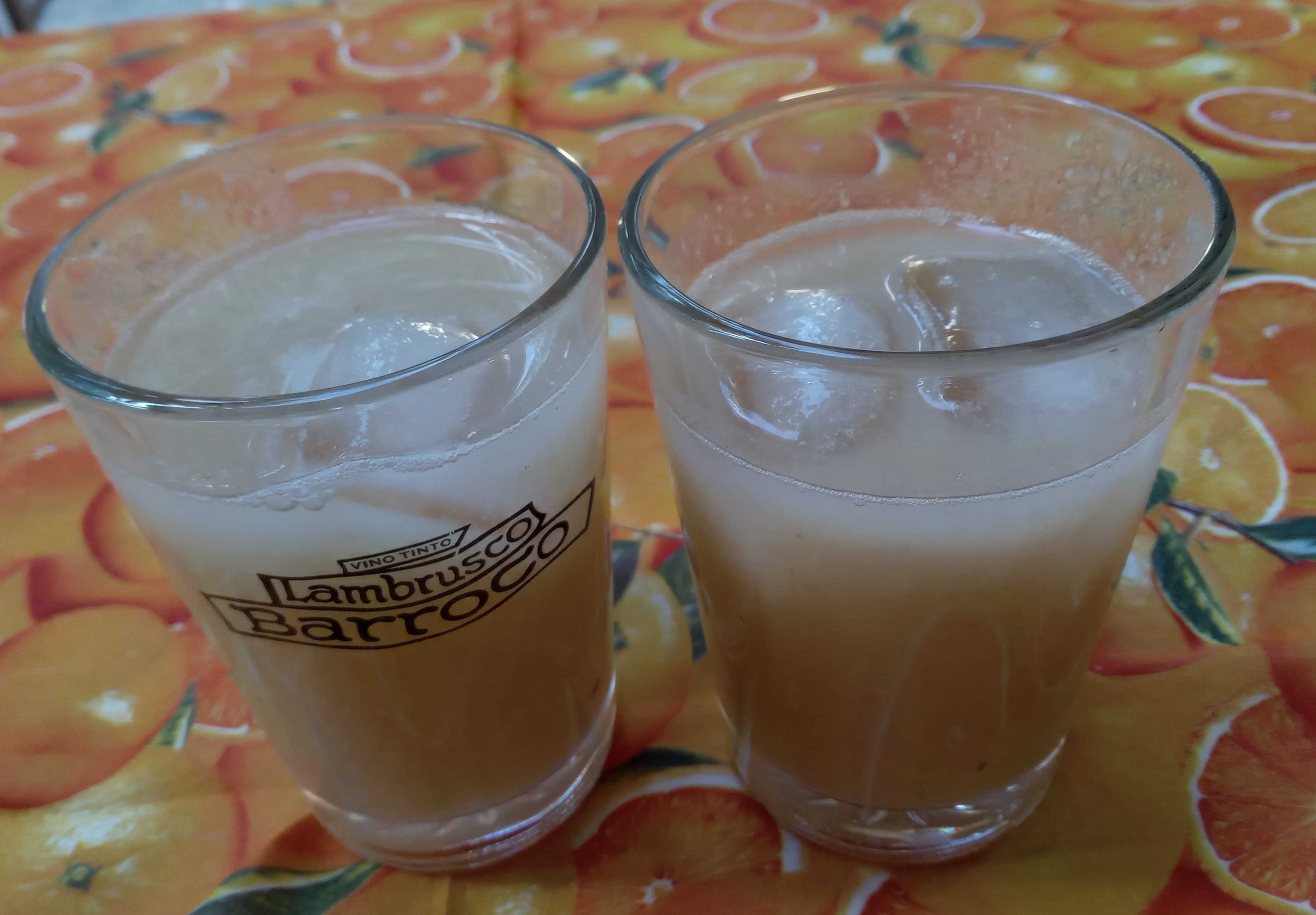
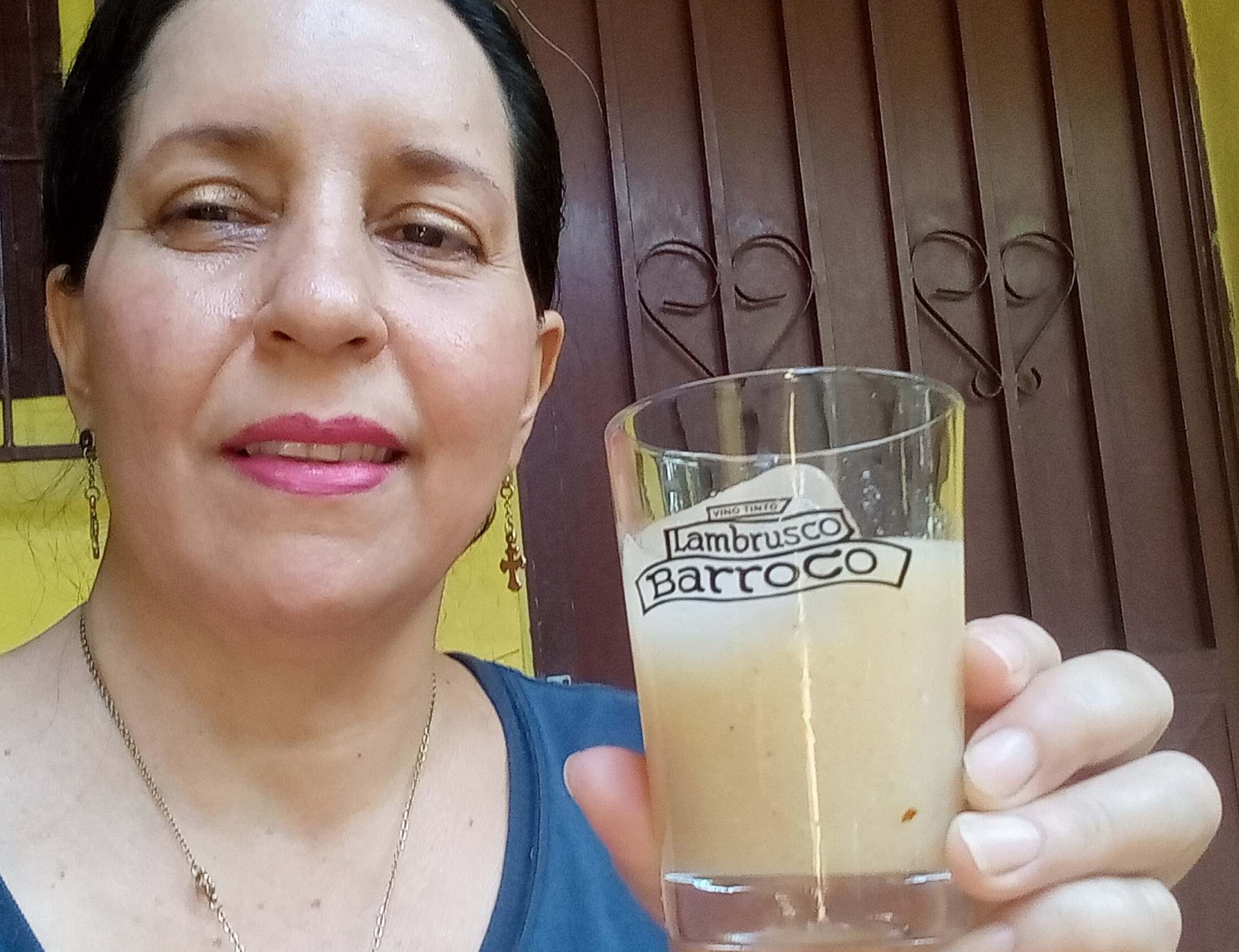
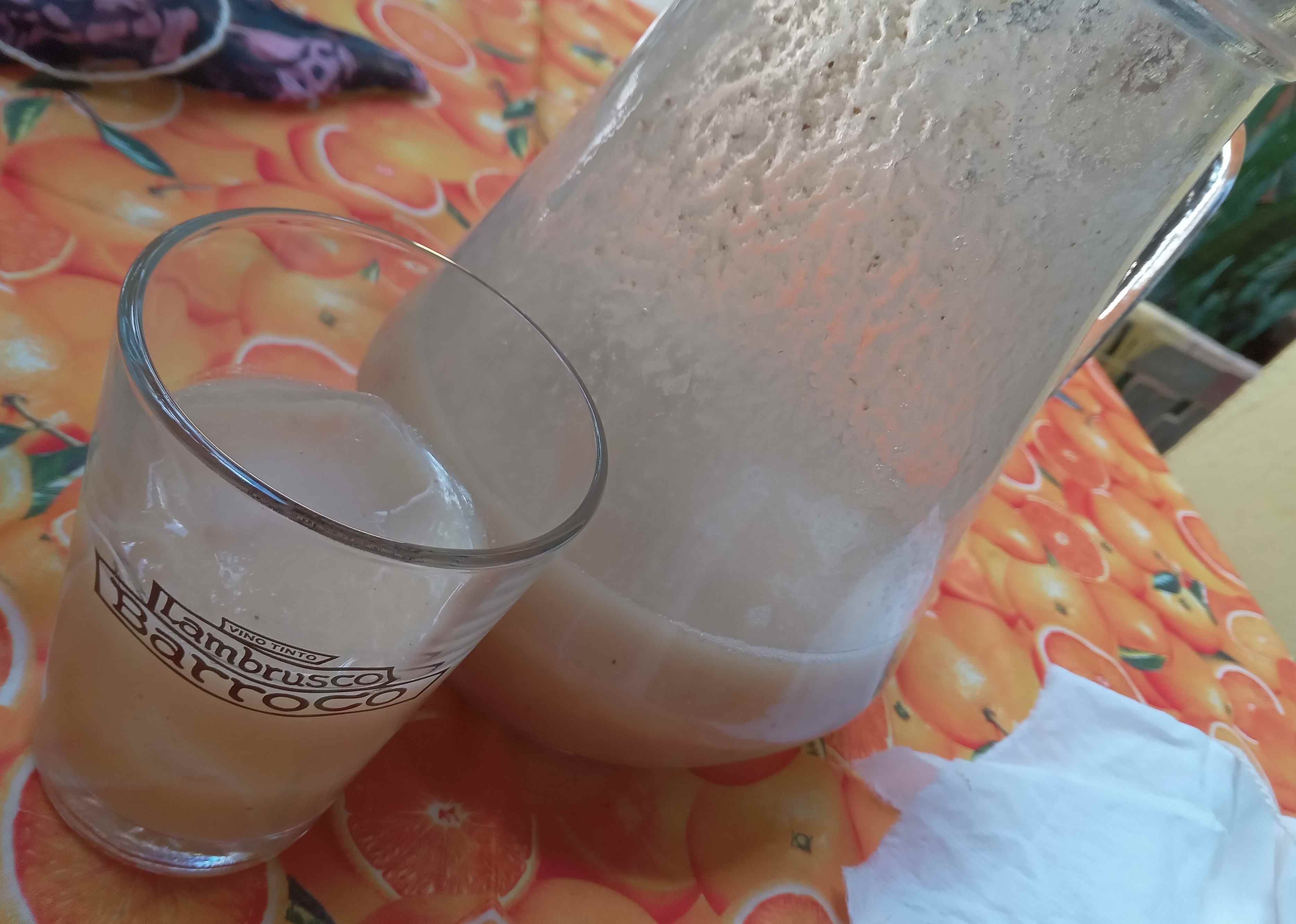

THIRD DAY OF FERMENTATION / TERCER DÍA DE FERMENTACIÓN

The two jars were in the refrigerator for 24 hours, in order to slow down the fermentation process. After this period of time, I proceeded to strain (there are no photos of this process), and mix both juices, and the result is this more transparent, delicious, very aromatic drink, and with an alcoholic touch, which is really very tasty. Cheers!
>Las dos jarras estuvieron 24 horas en la nevera, a fin de aminorar el proceso de fermentación. Luego de este lapso de tiempo, procedí a colar (no hay fotos de este proceso), y a mezclar ambos jugos, y el resultado es esta bebida más transparente, deliciosa, muy aromática, y con un toque alcohólico, que está realmente muy sabrosa. Cheers!

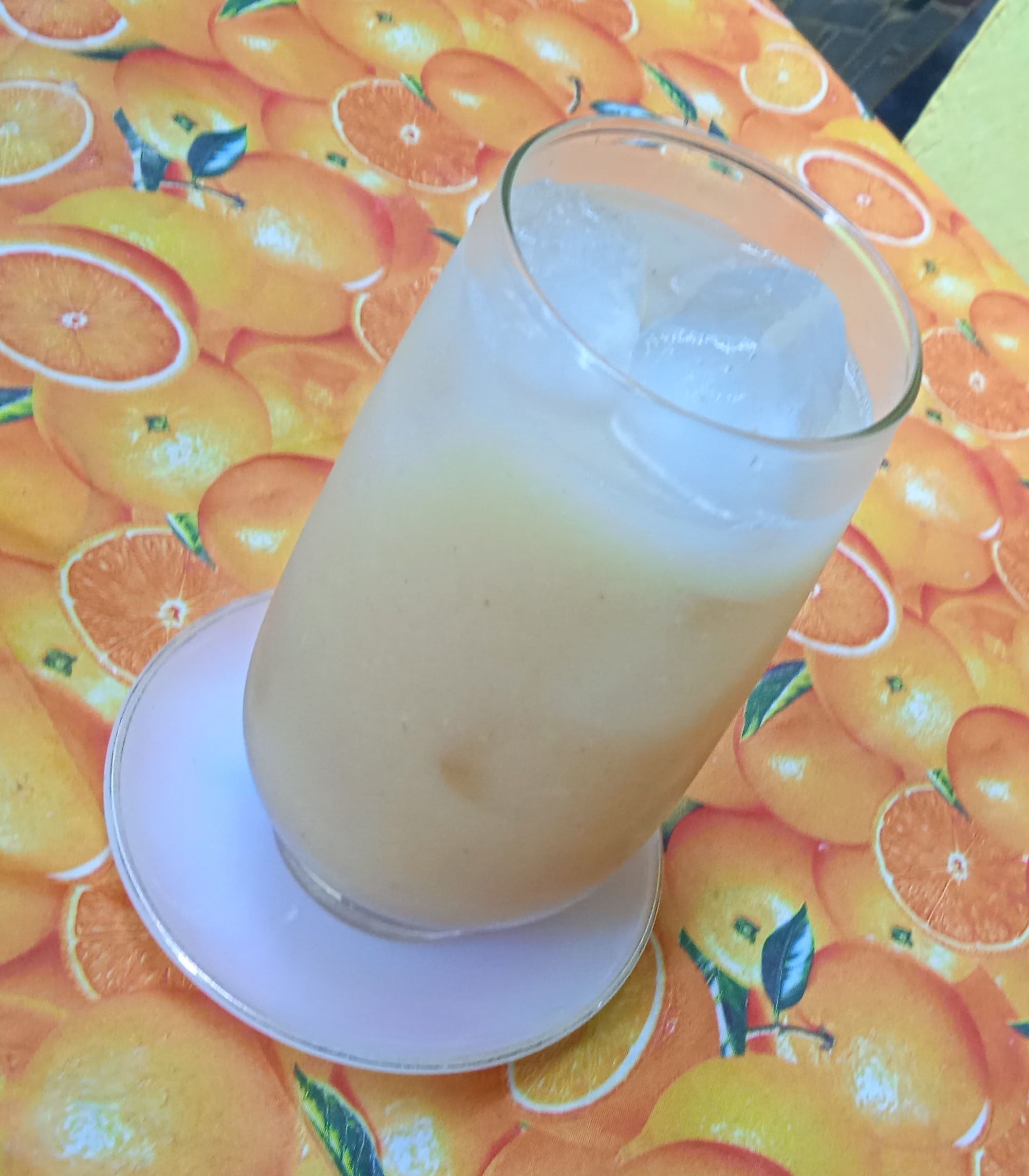

Here I end my post today, in which I have shared with you a very simple, tasty and healthy fermented drink, in which I have used honey as a fermentation element. I hope you too are encouraged to bring all those wonderful and unique drinks from this world to the Amazing Drinks community. I say goodbye wishing health, prosperity and joy to all of you; and remember: Not all days are the same and more importantly: Everything you give, everything you do, will inexorably return to you. Hugs!
Aquí termino mi post de hoy, en el que les he compartido una bebida fermentada, muy sencilla, sabrosa y saludable, en la cual he utilizado la miel como elemento de fermentación. Espero se animen ustedes también, a traer todas esas bebidas maravillosas y únicas de este mundo a la comunidad Amazing Drinks. Me despido deseando salud, prosperidad y alegría para todos ustedes; y recuerden: No todos los días son iguales y más importante aún: Todo lo que das, todo lo que haces, inexorablemente volverá a ti. ¡Abrazos!

Image sources
* These photos are my own, and were taken with a Galaxy a04e phone / Estas fotos son de mi propiedad, y las tome con un smartphone Galaxy a04e
+ The separators are my own and have been made using the CANVA application; and I DO NOT authorize its use in other publications, except for community publications and my own.

Todo el contenido es de mi propiedad y está sujeto a derechos de autor // All content is my property and subject to copyrigh

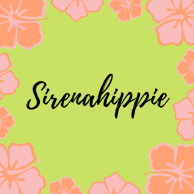

[












































